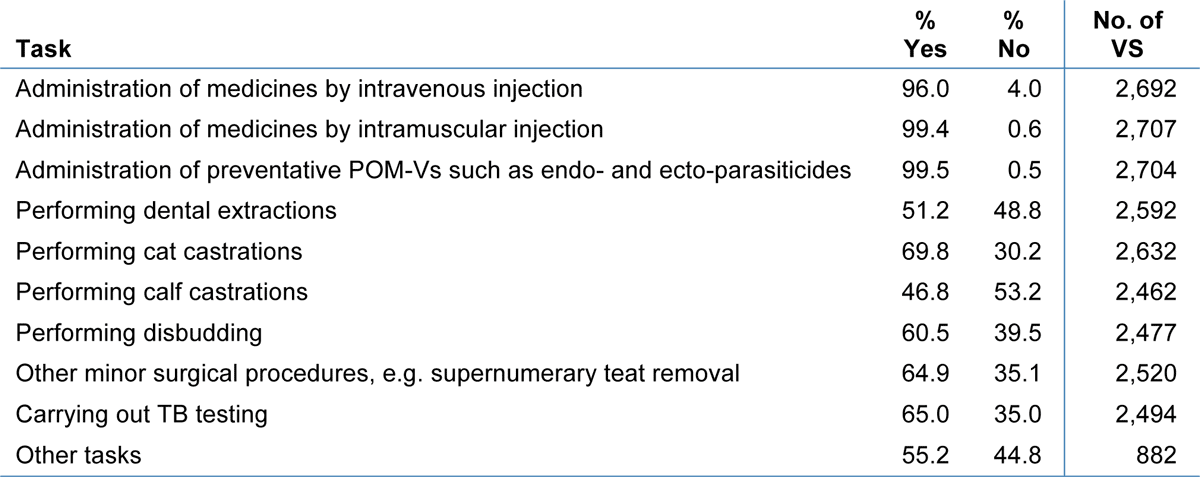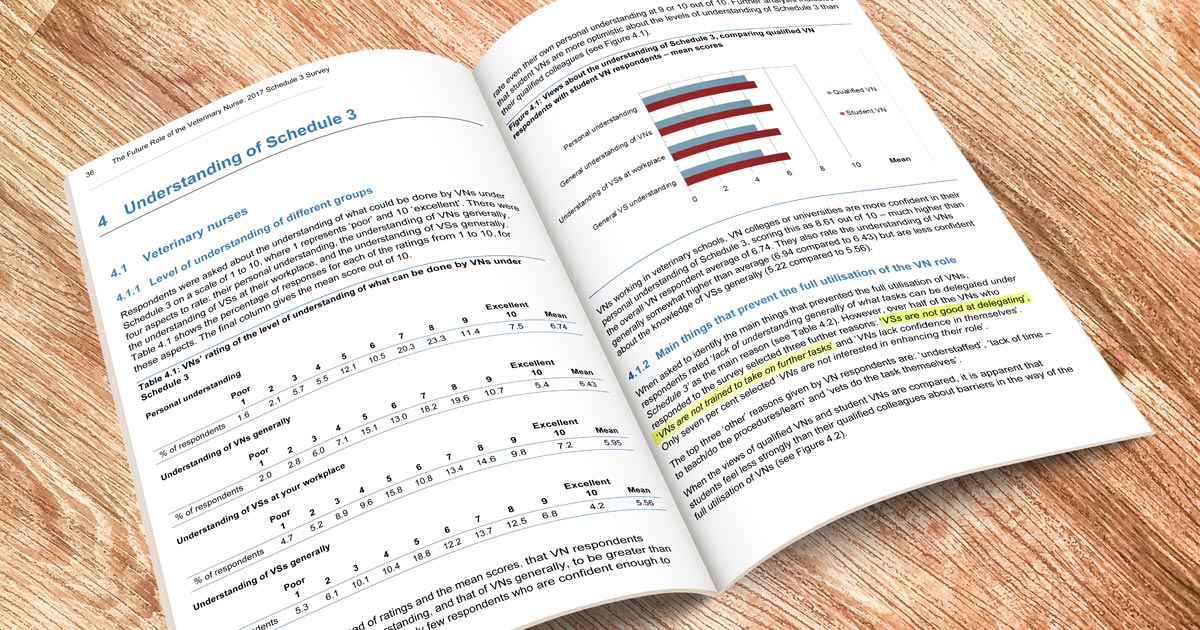As well as traditional Halloween high jinks, 31 October 2017 marked a truly happy day for veterinary nurses, as the RCVS published results of its survey into VNs and vets‘ knowledge and use of – as well as future wishes for – the VN role under Schedule 3.
As the full document is more than 90 pages long, I’ve read it and picked out a couple of themes I think we need to acknowledge and address first.
The headlines from a few weeks ago included the great news that this was the largest turnout for a survey for the RCVS – well done everyone. Around 35% of VNs expressed their opinions and 21% of vets, plus more than 1,500 SVNs – a great cross-section of the profession – and what is clear, from the need for the survey to the results, is we must work as #teamvet to further the VN role, reduce stress on vets and improve welfare for us and patients.
Firstly, a couple of brilliant highlights.
Lack of understanding
The first piece of news was vets do not feel confident in their understanding of the schedule and how best to delegate. It is fantastic to have this in writing. Those of us in practice have known this for some time, but for action to be taken, we need firm evidence, and this has now been provided.
Thank you vets for being honest – we want to work with you and reduce your stress. This evidence carries a lot of weight and has the power to change legislation, but we don’t need to wait for change.
With the current Schedule 3, we can start to work with vets to help create a team that stretches our VN skills, improves patient care, reduces the workload for vets and complies with the law.
Skills put to good use
The second great thing to see was, when asked to list the most frequently carried out VN tasks, hygiene tasks were number one, but monitoring anaesthesia was number four, with lots of other skilled tasks in the top 10 – proof that, in many places, RVNs are being well used.
The hard facts were not a surprise to anyone who has been near a vet practice recently, but this is much-needed evidence of what we actually do all day – show your family and friends, put a poster in the waiting room; it’s not all puppies and kittens.
The results of the survey aren’t that we must add another set of skills to “the list”, but that we should work to educate each other on our roles and what we can and cannot do. We should educate ourselves with appropriate CPD, work with practice owners to make the VN role visible to all and find some good old VN confidence that we are good at what we already do – otherwise, 71% of vets wouldn’t want us to do more, even listing some skills I hadn’t considered…

True definition
Defining the role without narrowing the scope of it is hard – as the existing system proves. The interpretations of minor, major and body cavity have wasted a lot of time over the years. While adding new tasks to our skill set is great, let‘s define where we are now and work with the vets so they can understand and delegate appropriately.
Many years ago, I carried out minor surgery successfully at a practice and one new vet felt I had the skills to amputate a hindleg on a dog. I said no as it wasn’t in my skill set, but it showed the confusion over surgery types and boundaries.
I think the confusion also impacts on our confidence in our roles. If there isn’t a defined boundary, it’s hard to tell whether you’re working to your best capability, and that doubt can leave you with some anxiety.
Getting noticed
What’s super important about the survey results is these figures, statistics and comments can be used in further research and cited in articles about the profession. I’ve already started writing about this in academic terms with The Veterinary Nurse journal, regarding how RVNs are hidden in practice.
Increasing our skills may make us more noticeable to colleagues, but if we want to increase our visibility to clients and the public we need to consider what we wear, how we present ourselves and how the vets note our presence in the billing and note making for RVN skills. With a properly produced survey, the industry now has evidence for undertaking more research into our roles and how best to use us.
Creating career choices with advanced pathways that employers understand and can be reflected in job roles and salary is clearly needed and, while this would then lead to adding to skills RVNs carry out, we can improve our situation now with improved communication.
Who is up for presenting CPD to vets on what your RVN can do and how it benefits you? Because I know most vets say working with a nurse team reduces their workload, improves patient care and makes for a better workplace.
Limitations
I could write loads more on the data that has come out – blog two is brewing as I type – but one note of caution needs to be highlighted: what the survey results don’t do.
They don’t act in place of employment law or your workplace rota or your contract. The RCVS can work to improve the laws that affect our roles, but, as vet nurses, we still need to stand up individually and as a group, and be counted in the journey to progress our role. Use the survey as a way to start a conversation about improvements you would like to see in your job.
The Schedule 3 survey results are another confirmation that our roles are needed, valuable and wanted – the relationship works for vets and pets, so let’s make it work for us, too.

Leave a Reply